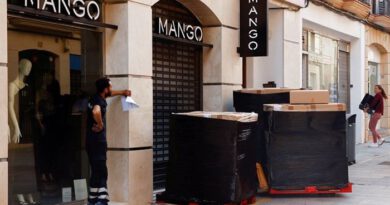Space-as-a-service: Thinking differently about industrial real estate
Space-as-a-service (SPaaS) – that complete paradigm shift in how the real estate industry provides value-adding products and services to tenants – is most commonly associated with retail, commercial and, to an extent, residential property.
But I like to think about how it applies to what author Dror Poleg, in his book Rethinking Real Estate, refers to as “the least glamorous sibling of office and retail”; namely, industrial property.
Let’s look at what you need to know about how SPaaS is changing the way the contemporary industrial property sector sees the landlord-to-tenant offering.
Unpacking the SPaaS model
Using the SPaaS business model, landlords provide a suite of extra, value-adding facilities and services that enable tenants to easily utilise and leverage the space – extending from digital connectivity to furniture, fixtures or even staffing.
In fact, Michael Beckerman, CEO of CREtech, points to the phenomenon of running these spaces “more like hotels” than those traditional sprawling industrial complexes of the 1950s.
In his LinkedIn article, “16 disruptive factors changing the face of real estate forever”, our CEO Rael Levitt refers to additional business solutions being in high demand at present, with “[e]ven buildings in the best locations…expected to offer a comprehensive solution in order to draw tenants. These solutions include not only functional benefits but also experiential and symbolic ones.”
Take, for example, the look and feel of communal spaces.
In a digital world, a building’s visibility is no longer limited to the offline stage. The way an asset looks online has a growing impact on its value. Poleg explains: “Even when end-users are already inside a physical space, they often value it based on how it would look when shared with followers on social media… This…also applies to longer-term..industrial spaces.”
The range of benefits
How might an industrial space build better around its physical assets? This begins with thinking creatively about how customers engage with the physical asset or building; about their ‘customer journey’.
Today, tenants (AKA clients) ‘buy into’ more than just physical space.
They’re also on the lookout for a value offer; one that blends operational factors, like an on-site property manager and maintenance team, with the nice-to-haves like popcorn on Fridays and a central business centre.
Here’s another thought: the human factor. At Inospace, our industrial business parks feature our trademark Red Box Security. Beyond safety, these beautiful guard houses elevate the status and value of those who put their lives on the line to protect our businesses, while transforming our security guards into real brand ambassadors.
Air-conditioned in summer and heated in winter, with modern bathrooms, top safety features and full modern conveniences, our Red Boxes are the first thing we build when we transform properties into serviced Inospace business parks.
Then, there’s access to forklift rental by the hour, the sharing of big machinery, tech-based inventory control, and even courier service specials.
Of course, it’s not all fun and games. The demand for flexibility, built-in systems, and better amenities for employees may present new opportunities for landlords, but it also gives operational complexity. In some cases, landlords may need to develop solutions that cater to some tenants and not others.
Things to think about
Consider good food and free Wi-Fi. Electrical meters, to offer independence when it comes to energy consumption, monitoring and settlement. An on-site manager to receive and sign for deliveries. Cleaning materials that are conveniently included in the bottom-line price.
In the developed world, there are WELL building standard requirements, which focus on people’s health and well-being in buildings and business parks. They define dozens of parameters: air quality, noise levels, temperature, the presence of plants and natural materials, accessibility by foot and bicycle, etc.
For a growing number of industrial customers, access is no longer about a single location but being able to move freely within a network of spaces. A unique element of the way we do things at Inospace is the invitation for our existing clients to use facilities at any of our parks nationwide.
What’s the bottom line?
Lital Marom, president of the Unfold Media Group, puts it succinctly: “The future of space lies in the clever servicing of it — not, it would seem, its ownership” (Forbes, 2019).
“From the outside, industrial space may seem dull: a bunch of lightweight structures full of cardboard boxes or machines located next to major transport hubs… But industrial assets can be more dynamic than many office or residential buildings,” adds Dror Poleg.
It appears that opening your doors to the SPaaS model can yield dynamic growth and push you ahead of the competition. So it may be time to think differently about industrial real estate and, potentially, to become one of the most sophisticated landlords on earth.
Contact moc.ecapsoni@rehsj to find out more.
Source: bizcommunity.com


